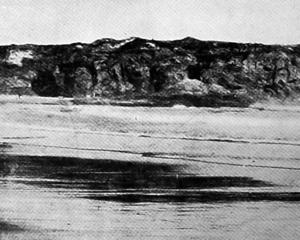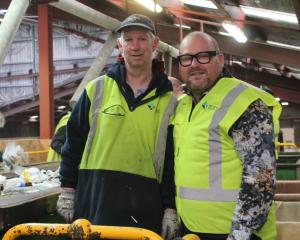
Work to install additional cameras in George St and other areas of the city centre is expected to start soon.
Enere, 16, a pupil at Trinity Catholic College, died after being stabbed at the Dunedin bus hub on May 23.
Four days later, Dunedin Mayor Jules Radich announced the Dunedin City Council, Otago Regional Council and police had agreed to establish a multi-agency working group that would be dedicated to changing the culture of behaviour at the bus hub.
When asked if the council was looking into how Dunedin’s network of inner city security cameras was managed, in the wake of Enere’s death, a council spokesman said they had been working to upgrade and enhance their CCTV network since 2022, and work was scheduled to continue until approximately 2028.
"Existing arrangements may also be the subject of future discussions by the Inner City Safety Advisory Group in due course," he said.
The council, in collaboration with police, operated a total of 17 city safety cameras in the Octagon.
The number was due to increase to 24 in the near future, the spokesman said.
Footage from the Octagon cameras was streamed live to the Dunedin Central Police Station and was made available to police as required.
Staff could also access footage from cameras in other locations as required and according to agreed protocols.
Work to install an additional 21 cameras in George St and four in Albion Lane was due to begin in the next few months.
Wiring for the new cameras in George St was pre-installed as part of the upgrades to the George St retail quarter.
Cameras were also in place in public-facing council buildings as well as in the Municipal Lane and Dunedin City Library plaza area.
Additional cameras would be installed in other locations including Toitu and the Dunedin Public Art Gallery over the coming years.
Dunedin also had a network of 28 traffic cameras at various locations, the spokesman said.
A police spokeswoman said they were able to tap into live feeds of any CCTV cameras in the council’s network to monitor activity on them.
Police were also able to utilise the footage after the fact, by requesting it from the council, but there were specific legal parameters they must abide by, she said.
"The footage, whether live or retrieved after the fact, can be incredibly helpful for police in terms of identifying individuals and helping piece together incidents.
University of Otago deputy proctor Geoff Burns said they had "several hundred" CCTV cameras across all campuses — including in Wellington, Christchurch, Invercargill and the Auckland dental facility.
There were cameras on campus, in and around Unipol and in residential colleges, as well as in public streets around campus.
Mr Burns said the cameras were actively used to safeguard both individuals and property.
They were "intentionally overt" which ensured visibility to students, staff and the public, and served as a visible deterrent rather than merely a reactive tool.
More than 90% of requests to review camera footage originated from students themselves — the most frequent reasons involving incidents such as property damage to vehicles and bicycles, he said.
Collaboration with police had resulted in instances where footage helped in the detection and apprehension of offenders.











